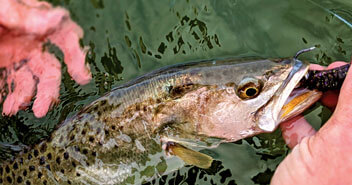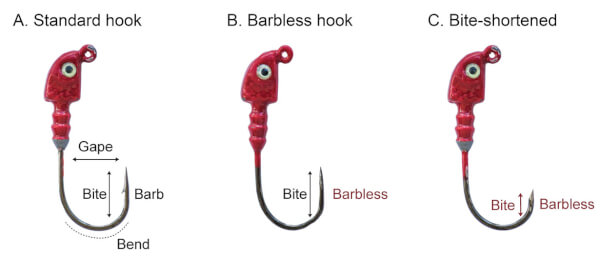Conservation-conscious anglers practice catch-and-release especially for species of fish that are caught for recreational fun rather than as food. The problem is that some fish don’t survive as human handling to remove the hook and exposure to air can impact health and ultimately the finned critter’s mortality. Now, a new ‘bite-shortened’ hook designed by researchers with the University of Florida (UF), the U.S. Department of Agriculture and U.S. Fish and Wildlife Service enables anglers to successfully catch and release fish without direct contact. This hook is basically a circle hook modified to have a shorter point or ‘bite’.
“We tested the bite-shortened hook with a popular coastal sport fish, Spotted Seatrout. The results were promising in our study done with this species, but we can’t report results for any other species,” says Holden Earl Harris, PhD, postdoctoral research associate at the UF’s Nature Coast Biological Station on Cedar Key. “Our hope is that our study will be replicated with other species where anglers target highly valued and at-risk species—such as tarpon, bonefish, peacock bass, taimen, tunas, and billfish. Such research appears warranted given the continuing rise in worldwide recreational fishing and our improving understanding of discard effects in fisheries. With further study and application, self-releasing hooks could provide novel management approaches and fishing best practices to optimize the tradeoffs between allowing fishing opportunities and conserving fish populations.”
The bite-shortened hook can be fashioned at home and with simple tools. Researchers made the bite-shortened hooks from standard hooks—3.5 g (1/8 oz) jig heads (“Offshore AnglerTM Deluxe Standup”) with a 15 mm bite distance—by cutting off the barbed portion of the hook with wire cutters to shorten the bite distance to 10 mm, and then sharpening the end at the cut-off point with the dermal grinder. Here is a how-to video: www.youtube.com/watch?v=Ptrrz0Fpx4A&ab_channel=UFIFASNatureCoastBiologicalStation





